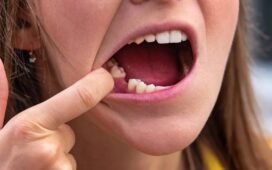We rarely think about our feet until something goes wrong. Corns may feel uncomfortable, but it’s the least of your worries. However, when corn becomes irritating or wearing a variety of shoes feels uneasy, you need to pay a podiatrist Dallas a visit.
Corns are pretty easy to deal with than other feet-related challenges. And most of the time people deal with corn in the comfort of their sofa. Here’s how to deal with corns
What is corn?
Corn is a small hardened part of your feet that grows because of wearing tight shores for a long time. Corns are not painful, but it is uncomfortable pressing them hard.
The continued pressure and friction on your toes make the skin tough and thick. Corns can develop on the bottom, side, or below the toenail. The corns on your feet can either be hard corns or soft corns.
- Soft corns-These corns are tender to the touch because the sweat on the feet keeps them moisturized. Soft corn typically develops between the big toe and the fourth one. Treat soft corn at home to prevent infections and prevent them from growing hard.
- Hard corns- These corns form because of wearing tight shoes for a prolonged time. Typically, they form on top of the small toe. Its color is usually lighter than the rest of the toe skin.
What is the difference between corn and calluses?
Corns are similar to calluses but slightly different. Corns are smaller and narrower than calluses. On the other hand, calluses are wider, larger than corns. Calluses don’t have a definite edge. Calluses form because of the pressure on your sole as you walk. They also form below the bony area under the toes, big toe, and heel.
Treatment for corns and calluses
You can try home remedies to manage corn and calluses. However, the best treatment is to visit a podiatrist for professional management. Here are the different ways of managing corns and calluses:
- Trimming: Soak your feet in lukewarm water for about 20 minutes. Then, gently scrape away the thick layer of the skin. A podiatrist would use a small tool to remove the excess skin. Soaking your feet will soften the corn, making it easy to rub off the corn.
- Chemical solution: Some mild compounds soften and dissolve the skin. Salicylic acid is a common chemical used by a podiatrist.
- Protection: Placing footpads and toe protection inside your shoe help to ease discomfort. Using footpads is easier and toe protection than treating corns and calluses.
How to keep corns away
Corns develop because of continuous pressure on the toes. Wearing well-fitting shoes is the best way of preventing corn from developing. Always ensure your new shoes have a snug fitting before paying for them.
Further, spending too much time in heels can cause corn to grow. High heels put pressure on the toes because of the slope at the foot’s instep.
You can also wear socks made from absorbent fabric. The socks should also be right fitting and should have adequate padding.
Conclusion
You can manage corn at home. However, persistent foot problems are best treated by a podiatrist.







